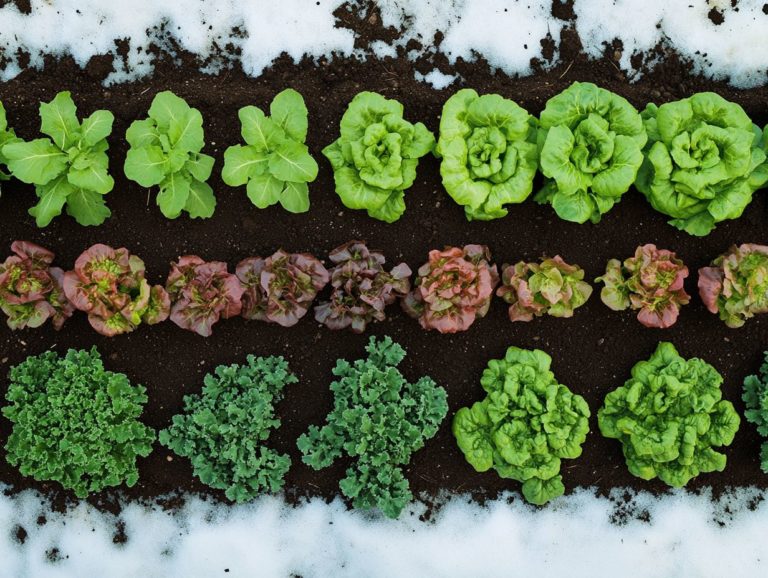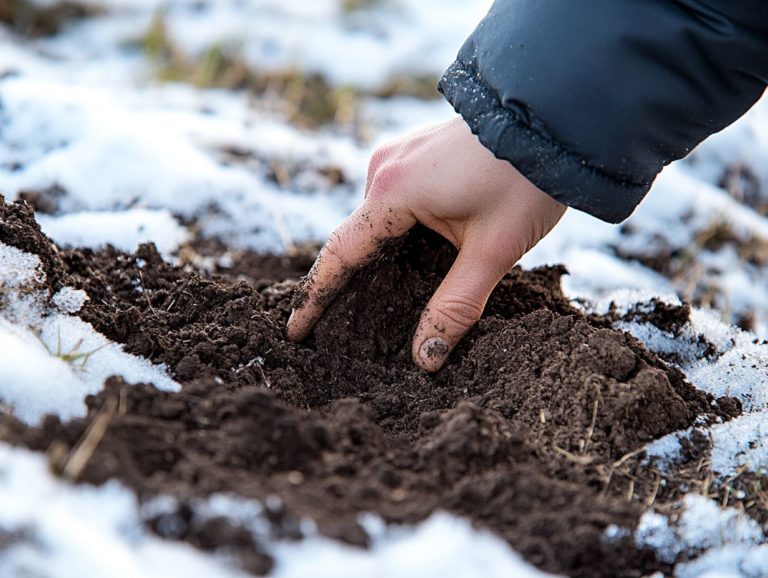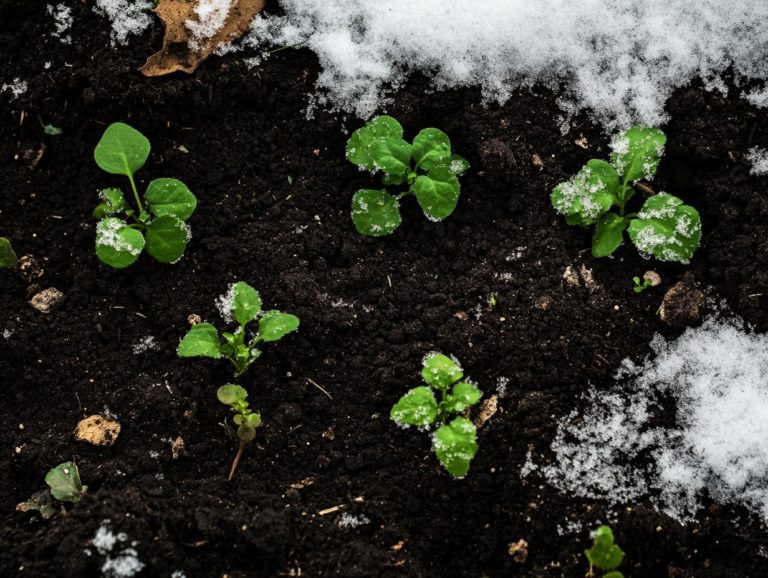How to Build Soil Quality Over Time
Soil quality serves as the cornerstone of vibrant ecosystems and fruitful agriculture, yet it often remains in the background until issues come to light. Grasping the true essence of soil quality and its importance can revolutionize your approach to land management.
This article delves into the crucial factors that shape soil health, covering everything from natural elements to the impacts of human activity. You ll discover effective strategies for enhancing soil quality, practical tips for long-term upkeep, and methods for assessing soil health using a variety of tools.
Join in as you uncover the myriad benefits of nurturing our soil for a sustainable future.
Contents
- Key Takeaways:
- Understanding Soil Quality
- Factors Affecting Soil Quality
- Methods for Improving Soil Quality
- Maintaining Soil Quality Over Time
- Measuring Soil Quality
- Benefits of Improving Soil Quality
- Frequently Asked Questions
- What is the importance of building soil quality over time?
- What are some methods for building soil quality over time?
- How does adding organic matter help to build soil quality over time?
- Why is crop rotation important for building soil quality over time?
- What is the role of cover cropping in building soil quality over time?
- How can reducing tillage contribute to building soil quality over time?
Key Takeaways:
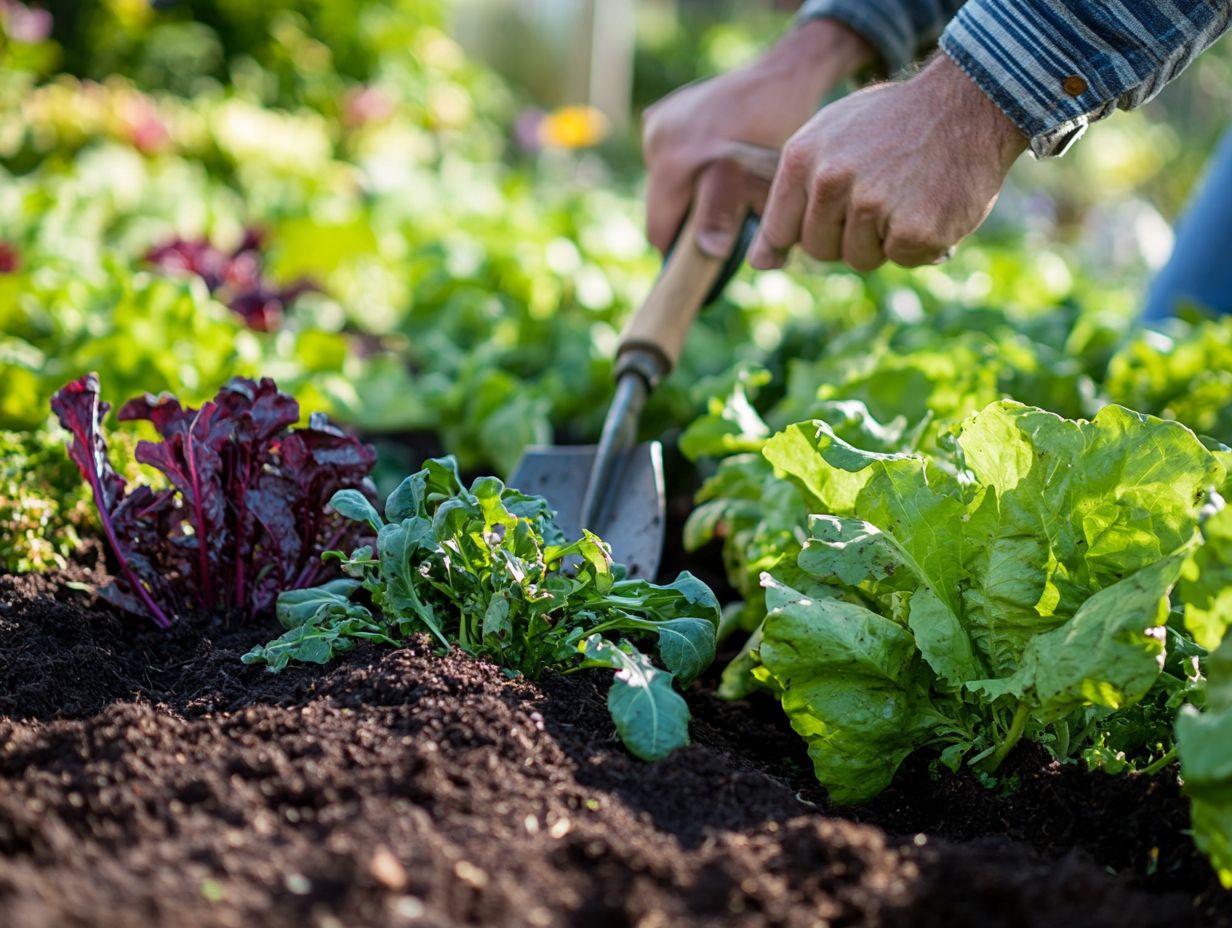
- Soil quality is essential for agriculture and the environment, influenced by natural and human factors.
- Enhance soil quality using organic matter and best practices for long-term health.
- Improving soil quality boosts crop yields and promotes environmental sustainability.
Understanding Soil Quality
Understanding soil quality is crucial for achieving sustainable agricultural practices and promoting vibrant plant growth. Healthy soil acts as a thriving ecosystem, supporting many helpful tiny living things, bacteria, and organic matter essential for enhancing fertility.
By assessing soil quality, you can make informed decisions to improve its structure and ensure the availability of vital nutrients. Embrace this knowledge to transform your garden soil into a productive powerhouse, capable of nurturing diverse plant life and fostering a robust community of soil organisms.
What is Soil Quality and Why is it Important?
Soil quality refers to the soil’s ability to function effectively, nurturing plant growth and supporting a vibrant community of soil life. This critical attribute plays a significant role in soil fertility, serving as the cornerstone for sustainable agriculture.
When you optimize soil quality, you enhance nutrient availability and water retention, which ultimately fosters healthier plant growth. For example, by incorporating organic matter like compost or cover crops, you can improve soil structure, enabling roots to penetrate deeper and access essential nutrients. As a result, your crops may yield more and exhibit greater resilience against pests and diseases.
A thriving soil ecosystem encourages beneficial microorganisms, creating a synergistic effect, meaning the health of plants and soil organisms work together to create a balanced ecosystem.
Factors Affecting Soil Quality
Numerous factors influence soil quality, encompassing natural elements such as climate and geology, alongside human activities like land management and agricultural practices. Understanding this intricate interplay is essential for nurturing healthy soil and promoting sustainable practices.
Natural and Human Influences
Natural influences such as rainfall, temperature, and soil type can profoundly affect soil quality, while human activities often lead to soil degradation. When precipitation varies, you might face challenges like waterlogging or drought, both of which hinder the soil’s ability to support crops.
Temperature fluctuations can influence the breakdown of organic matter and the availability of nutrients. On the flip side, practices like deforestation strip away essential tree cover, leaving soil vulnerable to erosion and diminishing its moisture levels. Intensive farming practices can exacerbate this issue, continuously depleting the land of its natural nutrients.
To combat these negative impacts, you can implement sustainable farming methods such as:
- Crop rotation
- Cover cropping
- Reforestation
These strategies restore soil health and fertility, enhance nutrient retention, and improve soil structure, making it more resilient against erosion.
Methods for Improving Soil Quality
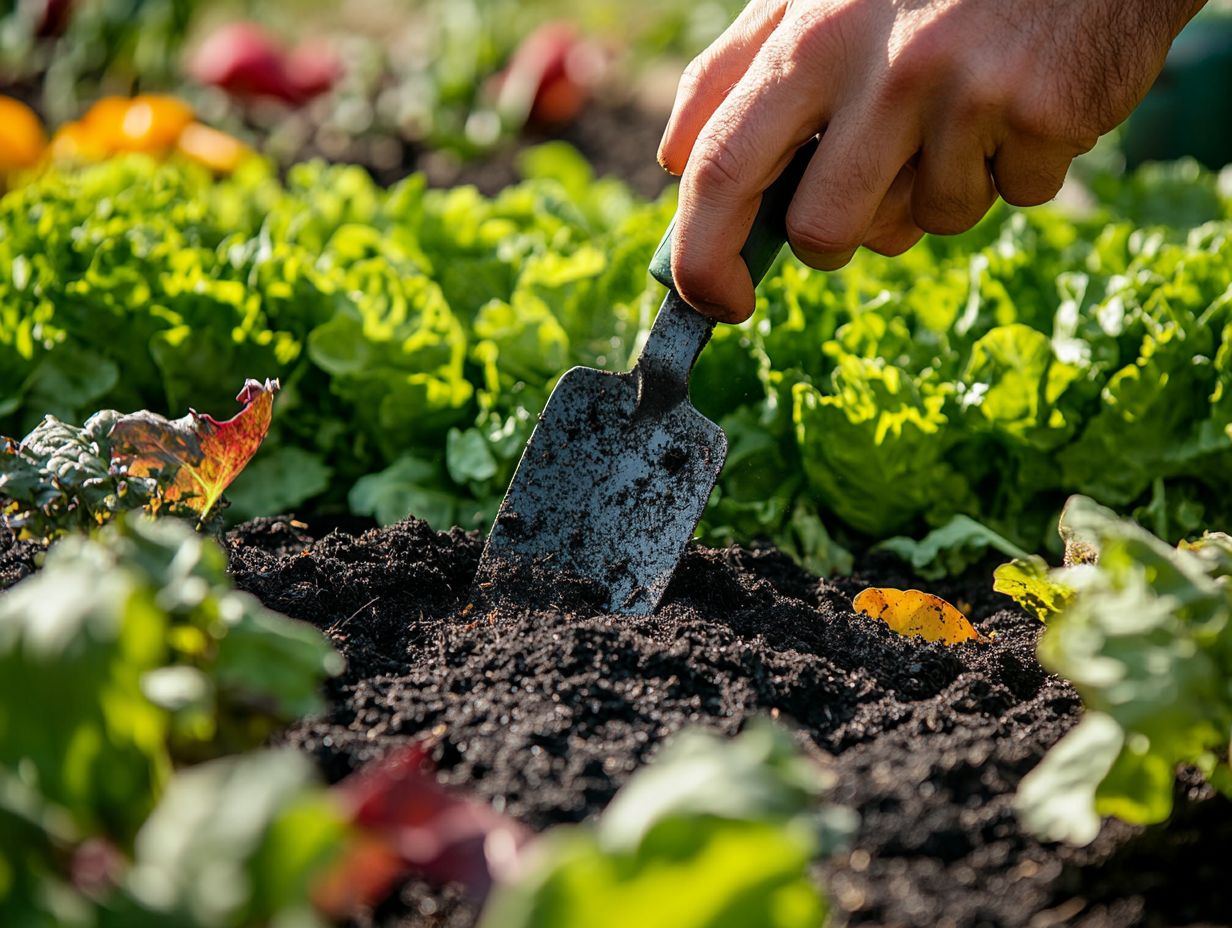
You have several effective methods at your disposal for enhancing soil quality, each designed to boost soil fertility and cultivate a flourishing ecosystem beneath your feet.
Ready to improve your soil? Start implementing these strategies today for a healthier garden tomorrow!
Organic Amendments
Organic amendments such as compost are essential for enhancing soil fertility and nurturing beneficial bacteria.
These enhancements, which can also encompass well-rotted manure, green manures, and biochar, play a significant role in humus management (the process of managing organic matter in the soil) by improving soil structure and moisture retention. As they decompose, they release vital nutrients that plants crave, cultivating a vibrant ecosystem of microbes. This diverse community of soil microorganisms thrives on these organic inputs, facilitating nutrient cycling and bolstering overall soil health.
With consistent application of these organic fertilizers, you ll find your soil becoming increasingly enriched, supporting sustainable farming practices. This approach not only leads to higher yields but also fortifies your crops against pests and diseases, all while protecting the environment.
Cover Cropping
Cover cropping stands out as a top eco-friendly farming method. By strategically planting specific crops, you can elevate soil quality and guard against erosion.
These crops are essential in replenishing vital nutrients, particularly nitrogen (a key element for robust plant growth). By integrating nitrogen-fixing plants (plants that help add nitrogen back into the soil) like legumes into your rotation, you can naturally enrich the soil, significantly reducing your reliance on synthetic fertilizers.
Cover crops also improve soil structure by fostering beneficial microbial activity and preventing compaction. This leads to optimal soil aeration and improved water retention, nurturing healthier ecosystems.
Employing such plants amplifies your agricultural productivity and bolsters the land’s resilience, promoting biodiversity and minimizing runoff, ultimately delivering significant benefits to the environment.
Conservation Tillage
Conservation tillage is a sophisticated farming practice that minimizes soil disturbance, allowing you to preserve soil structure and reduce compaction.
By embracing this technique, you can cultivate a more resilient agricultural system that enhances your soil’s ability to retain moisture. This improved water retention not only supports crop growth during dry spells but also boosts nutrient absorption, diminishing your reliance on chemical fertilizers.
Moreover, utilizing conservation tillage fosters microbial activity and increases organic matter content in the soil, leading to healthier long-term soil profiles. This cornerstone of sustainable agriculture adeptly combats erosion, enhances biodiversity, and nurtures a balanced ecosystem, ultimately securing the longevity of your farming productivity.
Maintaining Soil Quality Over Time
Maintaining soil quality over time is crucial for sustainable agriculture. You can boost your soil’s health with exciting and effective best practices designed to enhance soil health.
Best Practices for Long-Term Soil Health
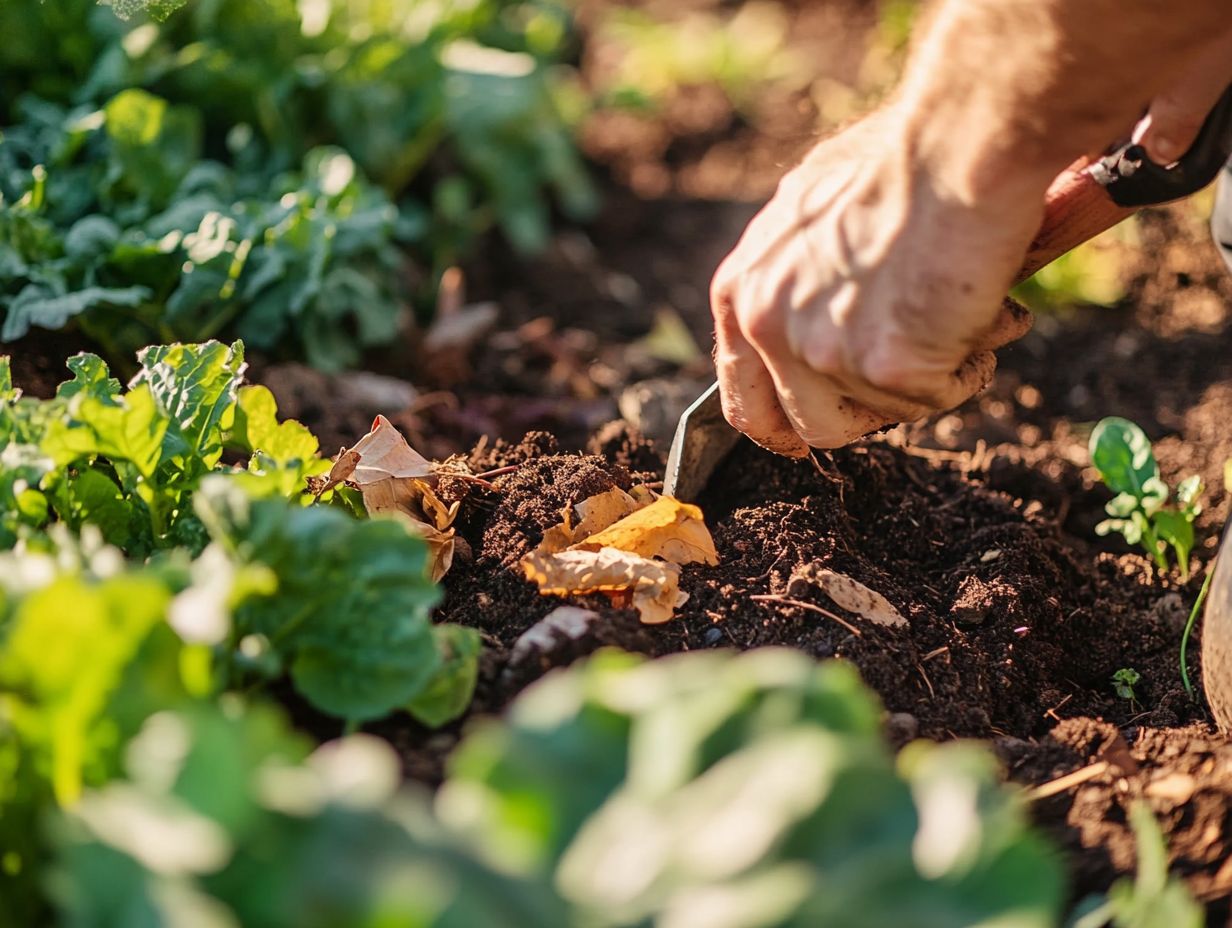
Implementing best practices like crop rotation and utilizing soil amendments is essential for nurturing long-term soil health. These strategies are pivotal in preventing nutrient depletion, as rotating different crops naturally replenishes soil nutrients while keeping pests and diseases at bay.
By alternating deep-rooted plants with shallower varieties, you can significantly improve soil structure and bolster biodiversity, contributing to healthier ecosystems. Incorporating organic soil amendments, such as compost or cover crops, not only enriches the soil but also enhances its ability to retain moisture. This ultimately supports the growth of robust, deep-rooted plants, making them more resilient against environmental stresses and ensuring sustainable agricultural practices for the future.
Measuring Soil Quality
Measuring soil quality is essential for comprehending its fertility and overall health. You can achieve this through a variety of sophisticated soil testing methods designed to provide you with valuable insights.
Start enriching your soil today for a healthier planet!
Tools and Techniques for Assessment
Soil testing includes various advanced tools and techniques, blending laboratory analyses with field tests to provide a precise evaluation of soil quality.
These assessments offer vital insights into the nutrient composition, organic matter levels, and the overall health of your soil. Methods such as pH testing, nutrient extraction analysis, and microbial activity assessments the activities of tiny organisms in the soil that help plants grow are crucial in identifying the presence and availability of essential compounds like nitrogen, phosphorus, and potassium.
Understanding the pH value is particularly significant, as it directly affects nutrient availability and microbial activity. By evaluating these parameters, you can make informed decisions about fertilization and amendments, ultimately leading to enhanced soil management practices that boost crop yield and promote sustainability.
Benefits of Improving Soil Quality
Boosting your soil quality unlocks incredible benefits for your crops and the environment! It enriches the entire soil ecosystem and improves soil fertility, fostering a more vibrant and sustainable environment.
Environmental and Agricultural Advantages
The environmental benefits of enhancing soil quality are substantial, leading to increased biodiversity and improved soil health.
In the realm of sustainable agriculture, these advantages are particularly crucial. Practices that improve soil health reduce greenhouse gas emissions. Healthy soil functions like a sponge, adeptly retaining moisture and nutrients far better than its degraded counterparts, thus fostering vigorous crop growth while reducing reliance on chemical fertilizers.
As soil organisms flourish, they break down organic matter and recycle nutrients, establishing a balanced environment that nurtures both plant and animal life. Start using practices such as cover crops and minimal tillage today to rejuvenate your soil! The use of compost and organic fertilizers can further enhance this process.
Frequently Asked Questions

What is the importance of building soil quality over time?
Building soil quality over time is crucial for sustaining healthy plant growth and maintaining a productive ecosystem. It helps to increase soil nutrients availability, improve soil structure, and support beneficial microorganisms.
What are some methods for building soil quality over time?
There are several methods for building soil quality over time, including adding organic matter, crop rotation, cover cropping, and reducing tillage. These practices help to increase soil fertility, reduce erosion, and promote biodiversity.
How does adding organic matter help to build soil quality over time?
Organic matter is a key component in building soil quality. It provides nutrients for plants, improves soil structure, and increases water retention.
Why is crop rotation important for building soil quality over time?
Crop rotation involves planting different types of crops in a particular area over a period of time. This helps to prevent nutrient depletion and soil erosion while promoting pest and disease control.
What is the role of cover cropping in building soil quality over time?
Cover cropping involves planting specific plants that are not intended for harvest to cover and protect the soil. These crops help to prevent erosion, add organic matter, and fix nitrogen in the soil.
How can reducing tillage contribute to building soil quality over time?
Tillage involves turning over and breaking up the soil. It can be helpful at times, but too much tillage harms soil structure and reduces quality.
Reducing tillage helps preserve soil structure. This retains water and nutrients, boosting the growth of helpful microorganisms. This is key for healthier, thriving soil!



